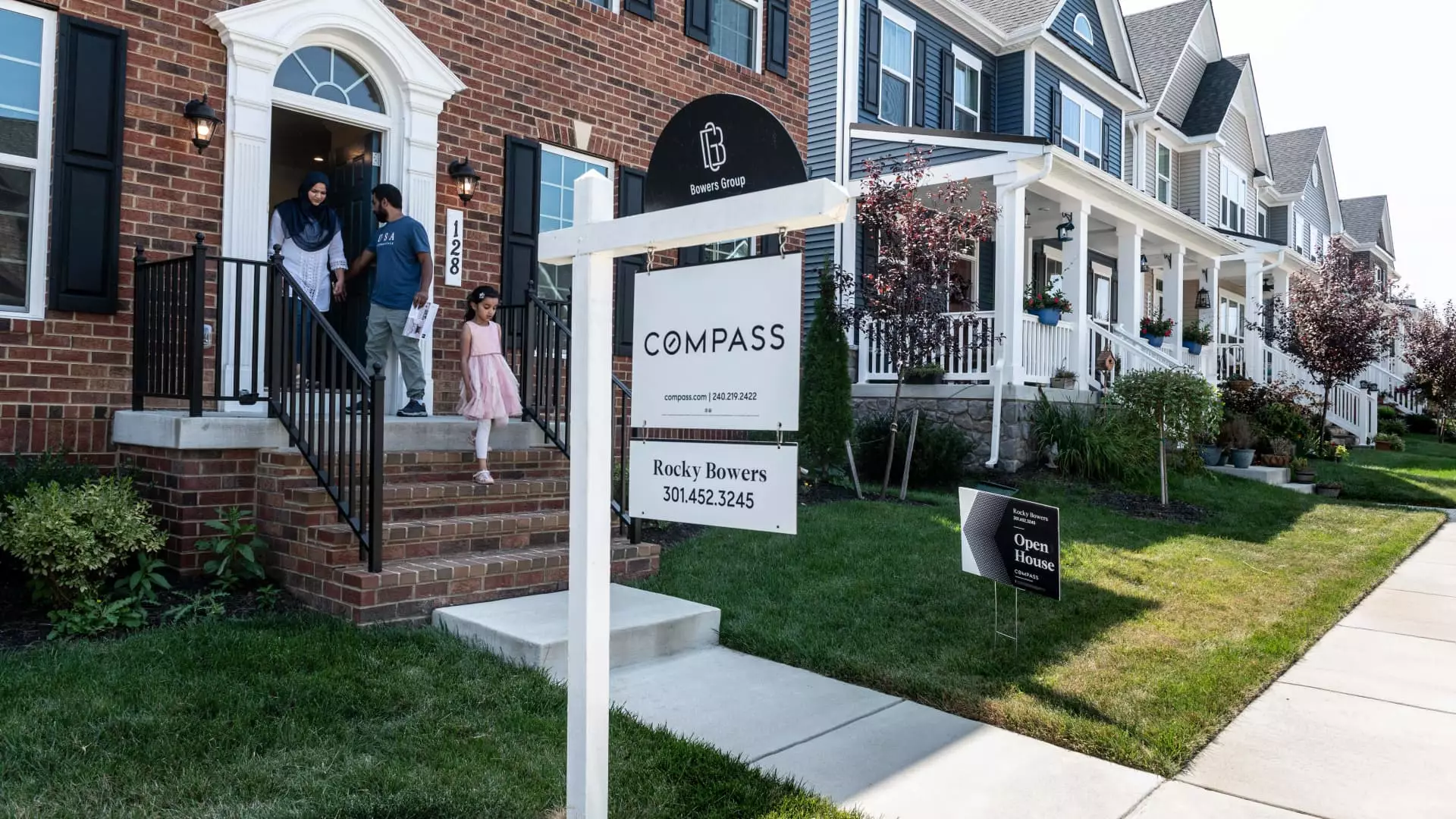The current landscape of the U.S. housing market is increasingly challenging, with rising mortgage interest rates, dwindling housing inventory, and persistently high home prices. A new layer of complexity has been introduced with the implementation of tariffs on essential building materials, placing additional strain on a market already buckling under pressure. The interplay of these economic factors is significant and warrants a closer examination of its potential implications for both builders and prospective homebuyers.
At the heart of this problem lies the tariffs imposed by the previous administration, specifically the 25% tariffs on softwood lumber imported predominantly from Canada and similar tariffs on gypsum products coming from Mexico. These materials are vital for the construction industry, as about 70% of the lumber used in new home constructions is imported. With the added tariffs, the cost of these necessary supplies skyrockets, forcing builders to either absorb the increased costs or pass them along to consumers via higher home prices. The National Association of Home Builders (NAHB) has sounded the alarm, indicating that these tariffs serve to exacerbate an already acute affordability crisis, especially for first-time homebuyers grappling with the prospect of entering a market rife with financial burdens.
Despite the attempts to ramp up domestic lumber production, the reality remains that a significant portion of essential building materials is imported. The computational cost of these tariffs is staggering, with estimates suggesting they could lead to an increase in construction material expenses by up to $4 billion. Such financial burdens disrupt builders’ ability to complete projects and potentially lead to a stagnation in new housing developments at a time when demand remains robust.
Recent statistics paint a troubling picture: home prices have surged over 40% since the pandemic began, with notable increases still observed year-over-year. As recorded by the S&P Corelogic Case-Shiller national home price index, home prices saw a 3.8% rise in November compared to the previous year, a trend that raises concerns for any individuals hoping to break into the housing market. Higher material costs due to tariffs are likely to further inflate these home prices, putting new homes out of reach for many prospective buyers, particularly those at the entry-level who are already feeling the squeeze of rising interest rates.
Compounding this issue is the potential ripple effect across the economy. Higher home prices limit consumer spending, creating a scenario where would-be buyers have less disposable income to dedicate towards essentials like down payments. Economic policy analysts have noted that these price increases might drive Congress towards enacting more favorable policies that encourage the construction of affordable homes, such as expanded tax credits. However, such legislative actions take time and may not alleviate immediate financial pressures.
Adding a further wrinkle to the housing market crisis is a significant labor shortage within the construction industry, which has been exacerbated by strict immigration policies. Estimates from the National Immigration Forum indicate that roughly 30% of the construction workforce consists of immigrants, many of whom are undocumented. As crew sizes dwindle due to deportations and heightened enforcement, building new homes becomes a more daunting challenge. Builders often express concern about how this labor shortage impacts their operations and, ultimately, the availability of homes in the market.
While larger builders may absorb some of the effects, smaller firms with thinner profit margins face dire consequences, potentially stymying new developments and contributing to a more limited inventory. Industry leaders have voiced their apprehension, stating that while they often look to Canada for lumber, all builders will ultimately feel the ramifications of increased costs and workforce inadequacies.
As we navigate this tumultuous housing market, several uncertainties loom on the horizon. Prospective homebuyers are contending not only with rising prices induced by tariffs but also with fluctuating interest rates tied to inflationary pressures created by these same policies. The resultant economic climate lays the groundwork for a challenging spring market, as affordability issues coupled with market dynamics could deter potential buyers from making commitments.
The intersection of tariffs, rising home prices, labor shortages, and evolving economic policies creates a complex and often troubling narrative for the U.S. housing market. Navigating these difficulties will require not only concerted efforts from builders and policymakers but also a keen awareness of the challenges facing both current and future homeowners. As this market evolves, it remains essential for all stakeholders to advocate for solutions that foster accessible housing while balancing economic growth and resilience.

